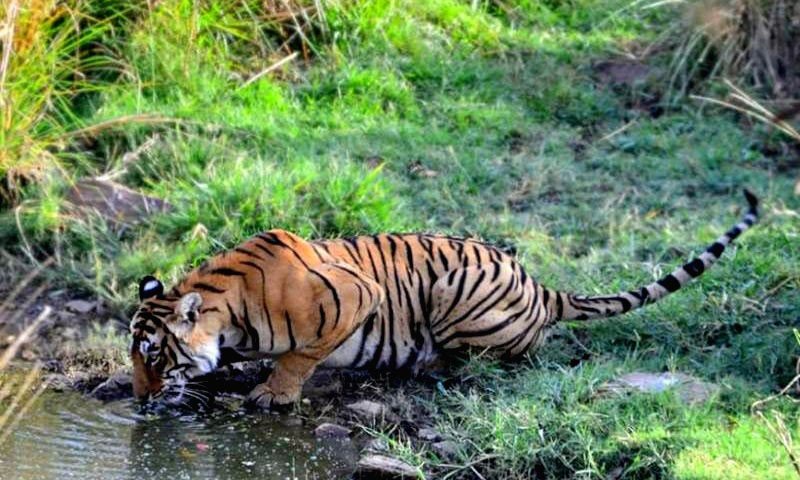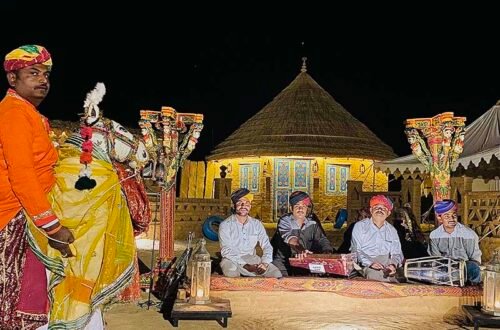Tucked away in the southeastern region of Rajasthan, Ranthambore National Park stands as one of India’s premier wildlife destinations. Known for its rich biodiversity and majestic Bengal tigers, the park is a haven for nature enthusiasts, photographers, and conservationists alike. A journey through the park reveals not just the iconic tiger, but also a fascinating array of species that thrive in their natural surroundings. Whether you’re a seasoned wildlife explorer or a first-time visitor, experiencing the wild through a Ranthambore Jungle Safari offers unparalleled encounters with some of India’s most captivating animals.
The Royal Bengal Tiger: Icon of Ranthambore
The primary attraction of Ranthambore, and rightly so, is the Royal Bengal Tiger. These elusive big cats rule the landscape with grace and power, often seen patrolling their territories or lounging near water bodies. Sightings are frequent during early morning or late afternoon safaris, making Ranthambore one of the best places in the world to observe tigers in the wild. Spotting one is not just thrilling; it’s a moment that connects you deeply to nature’s raw elegance.
Leopards: The Shadowy Predators
While tigers dominate the spotlight, leopards add an element of mystery to the Ranthambore experience. Agile and elusive, leopards prefer the rocky outcrops and denser forest areas within the park. Their solitary behavior and nocturnal habits make sightings rare, but that only heightens the excitement when one does appear. Wildlife photographers prize such moments for their rarity and dramatic visual appeal.
Sloth Bears: Gentle Foragers of the Forest
Ranthambore is also home to the shaggy-coated sloth bear, a unique species known for its long snout and love for termites. Mostly active during early mornings and evenings, sloth bears are often seen foraging near anthills or digging the ground. Observing one in the wild adds another layer to the safari, as it reflects the park’s ecological diversity beyond the big cats.
Marsh Crocodiles and Monitor Lizards
Ranthambore’s wetlands and lakes provide shelter to several reptilian species, including the powerful marsh crocodile and large monitor lizard. Jogi Mahal, located near Padam Talao, is a common spot to see these creatures basking in the sun or lurking in the water. These reptiles play a crucial role in the ecosystem, maintaining the balance of aquatic life and adding depth to the park’s wildlife spectrum.
Antelopes and Deer: Graceful Grazers
From the elegant sambar deer to the agile chinkara and the ever-alert spotted deer (chital), the park is teeming with herbivores. These animals are not just prey for the larger predators but vital contributors to the ecological food chain. Their movements are graceful and rhythmic, adding a serene dimension to the safari experience. Spotting herds grazing peacefully or playfully interacting is a common and heartwarming sight.
Exotic Birds: A Birdwatcher’s Paradise
Ranthambore boasts over 300 species of birds, making it a paradise for birdwatchers. Indian peafowls, serpent eagles, painted storks, and parakeets are among the many avian residents. During winter months, migratory birds like the greater flamingo and greylag goose also visit the park. The melodic calls and colorful plumage of these birds enhance the visual and auditory richness of the jungle.
Wild Boars and Hyenas: The Unsung Residents
Often overlooked but fascinating to observe are the wild boars and striped hyenas of Ranthambore. Wild boars are commonly spotted rooting through the underbrush in groups, while hyenas—rarely seen but distinctly vocal at night—add a mysterious charm. These scavengers play a vital ecological role by cleaning the forest of carcasses, ensuring balance in the natural environment.
Monkeys and Langurs: The Playful Primates
Ranthambore’s forests echo with the chatter and calls of langurs and rhesus macaques. These intelligent and social primates are entertaining to watch, often seen grooming, playing, or leaping from tree to tree. They serve as indicators of the forest’s health and often alert other animals—and tourists—to the presence of predators with their alarm calls.
Best Way to Experience Wildlife: Canter Safari in Ranthambore
To explore these natural wonders, a Center Safari in Ranthambore offers an ideal platform. These shared open-top vehicles provide excellent visibility and access to deeper zones within the park. Guided by trained naturalists, canter safaris combine safety, insight, and comfort, making them a popular choice among groups and families.
Where to Stay: Comfort Meets Wilderness
For travelers seeking to blend wildlife adventure with relaxation, finding the Best resort in Ranthambore becomes part of the experience. The accommodation you choose can enhance your entire trip—from early morning safari departures to late-night storytelling under the stars. A resort that understands the rhythm of the jungle offers not just a stay but a continuation of the safari narrative.
Indulge in Elegance: Luxury Stay Amidst Nature
For those who prefer comfort without compromising proximity to the wild, a Luxury Resort in Ranthambore offers the perfect blend of opulence and authenticity. Imagine waking up to the call of peafowls or unwinding after a safari with a view of the forest canopy. Premium accommodations provide personalized services, curated experiences, and a deeper immersion in nature.
Conclusion
A safari in Ranthambore is more than just spotting animals; it’s about witnessing the incredible interconnection of life in one of India’s most celebrated forests. Each sighting—be it a tiger’s gaze, a bird’s flight, or a monkey’s leap—adds to an unforgettable narrative of wilderness. With responsible tourism, guided safaris, and thoughtfully chosen accommodations, you’re not just exploring a national park; you’re becoming part of a larger story that values conservation, experience, and respect for nature.





